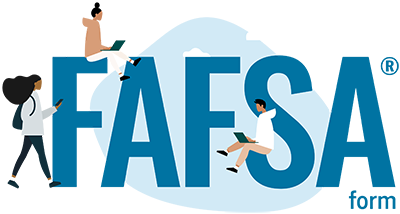1. The Transformative Impact of Federal Student Aid
In an era where college costs continue to climb, federal student aid stands as a vital resource, opening doors to higher education for students from all walks of life. Managed by the U.S. Department of Education, this program distributes over $150 billion annually through Pell Grants, student loans, and work-study opportunities, helping more than 12 million students pursue degrees without overwhelming financial burdens. The cornerstone of this system is the FAFSA (Free Application for Federal Student Aid), a single form that unlocks access to federal, state, and institutional financial aid. Whether you’re a high school senior, a returning adult learner, or a graduate student, federal student aid provides the tools to make education affordable. This blog offers a fresh perspective on navigating the FAFSA application guide, securing federal student aid scholarships, and leveraging student loans to build a brighter academic future.

2. The Value of Federal Student Aid Programs
The strength of federal student aid lies in its ability to make college accessible without the sticker shock. For the 2025–26 academic year, Pell Grants offer up to $7,395 for students with significant financial need, requiring no repayment and directly reducing tuition costs. Unlike private loans, federal student loans provide fixed interest rates—6.53% for undergraduates in 2024–25—and options like income-driven repayment, easing the burden for borrowers. Completing the FAFSA not only qualifies you for federal aid but also connects you to state grants and federal student aid scholarships offered by colleges, many of which rely on FAFSA data to allocate funds. Recent X posts from financial aid offices, like those from Pellissippi State, stress the importance of early applications to secure limited state funds, with deadlines as early as February 1, 2025, for some programs. By tapping into federal student aid, students can focus on learning rather than loans.
3. Decoding the FAFSA Application Process
The FAFSA is your key to unlocking federal student aid, and understanding its process is essential for maximizing benefits. Start by creating an FSA ID on studentaid.gov, a secure login for you and, if you’re a dependent, a parent, which takes 1–3 days to activate. The FAFSA form, accessible online or via the FAFSA mobile app, collects financial details like income and household size to calculate your Student Aid Index (SAI), determining eligibility for Pell Grants and student loans. Launched on October 1, 2024, for the 2025–26 academic year, the form has a federal deadline of June 30, 2026, but states like California require submissions by April 2, 2025, for priority aid. The IRS Data Retrieval Tool simplifies tax reporting, cutting completion time to about 45 minutes. Within 3–5 days of submission, you’ll receive a FAFSA Submission Summary outlining your financial aid eligibility. This FAFSA application guide helps you navigate the process with confidence.
4. Exploring Federal Student Aid Options
Federal student aid offers a diverse array of programs to suit various needs. Pell Grants, a cornerstone for undergraduates, provide up to $7,395 for 2024–25, with special provisions for children of fallen servicemembers or public safety officers to receive maximum awards. Direct Subsidized Loans cover interest during school for students with financial need, while Direct Unsubsidized Loans are available to all eligible students, with rates at 6.53% for undergraduates and 8.08% for graduates. Direct PLUS Loans support graduate students or parents, though they require a credit check. Federal Work-Study programs fund part-time jobs, helping students earn money for expenses. Additionally, federal student aid scholarships like TEACH Grants offer up to $4,000 for aspiring teachers in high-need fields, with a service commitment post-graduation. Each college you list on your FAFSA will provide a tailored aid offer, blending these options to meet your needs.

5. Steps to Secure Federal Student Aid
Applying for federal student aid is a streamlined process when approached methodically. Gather essential documents, including your Social Security number, recent tax returns, and bank statements, to ensure accuracy. Create an FSA ID on studentaid.gov to sign the FAFSA electronically, ensuring both you and a parent (if dependent) have active IDs. Complete the online FAFSA, listing up to 20 colleges, and use the IRS Data Retrieval Tool to auto-populate tax information. Submit by the earliest deadline for your state or school—check studentaid.gov for specifics, as states like New York prioritize March 1, 2025, for limited grants. Review your FAFSA Submission Summary for errors and correct them promptly via studentaid.gov. Once processed, colleges will send financial aid offers, which you can compare to select the best package. This how to apply for federal student aid approach ensures you capture all available financial aid.
6. Boosting Your Aid with Grants and Scholarships
Maximizing federal student aid goes beyond student loans by tapping into grants and federal student aid scholarships. The Federal Supplemental Educational Opportunity Grant (FSEOG) provides $100–$4,000 for students with exceptional need, though funds are limited, making early FAFSA submission critical. TEACH Grants offer up to $4,000 for future teachers, requiring a commitment to teach in low-income schools for four years. State grants, like Virginia’s Commonwealth Award, often use FAFSA data and have early deadlines, as noted in X posts from colleges like Liberty University. External platforms like Fastweb can connect you to additional scholarships, while many colleges offer merit-based or need-based grants to FAFSA filers. Regularly check with your school’s financial aid office for institutional awards, as some double Pell Grants with their own funds. These strategies reduce reliance on student loans and enhance your aid package.

7. Tips for a Flawless FAFSA Experience
A successful FAFSA application starts with preparation and timing. Apply as soon as the form opens on October 1 to secure limited funds, as states and colleges often award aid first-come, first-served. Confirm eligibility—U.S. citizens or eligible non-citizens enrolled in accredited programs qualify, but those with bachelor’s degrees may be ineligible for Pell Grants except in specific cases like teacher certification. Ensure accuracy by using the IRS Data Retrieval Tool and double-checking your FSA ID login. Use the Federal Student Aid Estimator to gauge your Pell Grant eligibility beforehand. If you encounter issues, contact the Federal Student Aid Information Center at 1-800-433-3243 or your college’s financial aid office—avoid paid services, as FAFSA help is free. These how to apply for federal student aid tips streamline your application and boost your financial aid potential.
8. Your Path to Success with Federal Student Aid
Federal student aid transforms college dreams into reality by providing accessible, flexible financial aid. With Pell Grants covering tuition without repayment and student loans offering manageable terms, the FAFSA unlocks opportunities for millions. Recent X posts from schools like the University of Tennessee urge students to apply early for 2025–26 aid, as state deadlines like February 15, 2025, approach fast. Whether you’re pursuing a bachelor’s, associate, or graduate degree, federal student aid scholarships and grants make education affordable. Visit studentaid.gov, start your FAFSA today, and take control of your academic journey with the confidence that federal student aid is behind you, paving the way to a brighter future.


.jpg)










